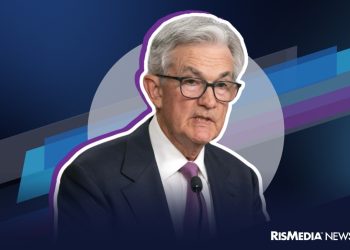The new year is upon us and with it comes new factors which can and will affect real estate throughout the year. Here, New York Power Broker Louise Phillips Forbes of Halstead Property makes her predictions for what real estate will look like on a national scale in 2017, and how you can make the most of it. Keep an eye on the following:
- Increased interest rates will be a game-changer.
While interest rates are still some of the lowest they’ve been in years, they are increasing and will be a motivating factor for buyers early in the first quarter, especially since 95 percent of first-time homebuyers are dependent on financing. Expect them to act quickly and lock-in reasonable long-term loans enabling them to make long-term buys.
- The market is not in decline; it is re-setting.
Nationwide, home prices are forecast to slow to 3.9 percent growth year-over-year, from an estimated 4.9 percent in 2016. The biggest shift will occur in the ultra-luxury market, especially in urban environments with a massive construction boom, where the highly accelerated and unsustainable growth for the past five years lead to inflated asking prices and declining absorption rates. As a result, New York City in particular—a national leader in the housing market—is experiencing a very efficient re-setting of the high-end luxury sector, with values down 25- 40 percent to more realistic prices, establishing a growth pattern that is more in line historically.
- Millennials and baby boomers will dominate again.
These two dominant demographics will power demand for the next 10 years. Both generations are approaching life changes that traditionally motivate people to buy or sell a home. These life-defining changes include: marriage, having children, retiring and becoming empty nesters. As such, the baby boomers could boost the market with double transactions as both buyers and sellers. Most of them are already homeowners, so they will be looking to sell and downsize to a smaller home, lowering their cost of living to maximize ease of retirement. Baby boomers have the potential to make up 30 percent of buyers in 2017, and being less dependent on financing gives them an advantage to be more successful with closings. Millennials, on the other hand, are more likely to finance and thereby more susceptible to increased interest rates, but they are still expected to make up 33 percent of buyers in the new year.
- The Midwest is the new frontier.
Due to escalating rents and inflated home prices in the coastal cities, millennials are drawn to the Midwestern markets because they have a lower cost of living coupled with tremendous job growth. Midwestern cities claimed 42 percent of the millennial purchase market share in 2016, much higher than the U.S. average of 38 percent.
There is strong affordability in 15 of the 19 largest Midwestern markets, so this trend is expected to continue even as interest rates increase. Strong local economies and population growth will fuel the appeal of these hot markets, so keep your eye on: Columbus, Ohio; Omaha, Neb.; Des Moines, Iowa; Grand Rapids, Mich.; Minneapolis, Minn.; and Colorado Springs, Colo.
- Foreign buyers expand their borders beyond coastal cities.
While international buyers still look to New York City, Los Angeles, Miami and San Francisco real estate as a safe haven for their money, escalating price per square foot numbers—an average of $2,400-plus in Manhattan—are pushing them to look in other metropolitan areas nationwide. Cities like Nashville, Tenn.; Charlotte, N.C.; Columbus, Ohio; Chicago, Dallas and Austin, Texas are rapidly grabbing foreign buyers because prices are lower and they can get a better return on investment. Their primary interests are long-term growth opportunities, a luxury lifestyle and security. Moving forward, prime coastal locations will remain strong but the trend of international buyers expanding their searches and taking a serious look at new locations will continue to accelerate.
- Consumer confidence will boost home sales.
With the anticipation of stronger economic and wage growth in 2017, home sales could exceed 6.3 million transactions, a significant increase from 2016. The GDP growth is forecast to be 2.1 percent with a 2.5 percent increase in the consumer price index, while unemployment is expected to decline to 4.7 percent by the end of 2017.
Furthermore, the record-breaking rise and powerful performance of the stock market post-election has fueled confidence and given people the assurance they need to loosen their purse strings. Folks who were hesitant to spend money during a tumultuous and uncertain election year are now ready to put their money to use.
- Lack of inventory spurs fast-moving markets. Buyers should be prepared.
Inventory is currently down an average of 11 percent in the top 100 metropolitan markets nationwide, but with interest rates on the rise, prices may go down slightly. A slowdown in home price appreciation could motivate more property owners to sell, easing some of the inventory crunch. Regardless, in a competitive market, buyers need to be prepared and able to act quickly when they find Home Sweet Home. Build your team early on and don’t lose out on a property because of some unnecessary mistakes that occurred simply because you weren’t organized. Your team should include a real estate attorney, mortgage lender, real estate broker, appraiser and inspector (if necessary).
Louise Phillips Forbes is one of Manhattan’s elite Power Brokers. As a multi-time winner of Halstead Property’s esteemed Broker of the Year award, she currently leads the firm’s No. 1 team. Recognized as a highly-dependable advocate for her clients, she considers herself more of an “educator” than a salesperson. She also appears on national and regional TV shows across the country to comment on local, domestic and international real estate issues.
For more information, please visit www.halstead.com.
This was originally published on RISMedia’s blog, Housecall. Visit the blog daily for housing and real estate tips and trends. Like Housecall on Facebook and follow @HousecallBlog on Twitter.










